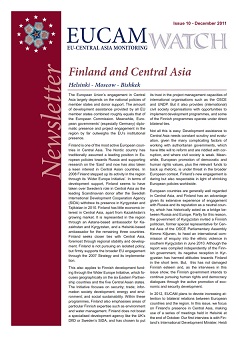Finland and Central Asia
Finland and Central Asia
Author(s): Jos Boonstra, Heidi Hautala, Tuula Yrjölä
Contributor(s): Jos Boonstra (Editor), Nafisa Hasanova (Editor), Tika Tsertsvadze (Editor)
Subject(s): Governance, International relations/trade, Geopolitics
Published by: CEPS Centre for European Policy Studies
Keywords: European Union; Central Asia; Finland; foreign policy; international relations;
Summary/Abstract: The European Union’s engagement in Central Asia largely depends on the national policies of member states and donor support. The amount of development assistance provided by all EU member states combined roughly equals that of the European Commission. Meanwhile, European governments’ (especially Germany) diplomatic presence and project engagement in the region by far outweighs the EU’s institutional presence. Finland is one of the most active European countries in Central Asia. The Nordic country has traditionally assumed a leading position in European policies towards Russia and supporting research on the ‘East’ and now has also taken a keen interest in Central Asian countries. In 2008 Finland stepped up its activity in the region through its ‘Wider Europe Initiative’. In terms of development support, Finland seems to have taken over Sweden’s role in Central Asia as the leading Scandinavian donor after the Swedish International Development Cooperation Agency (SIDA) withdrew its presence in Kyrgyzstan and Tajikistan in 2010.
Series: EUCAM Watch
- Page Count: 6
- Publication Year: 2011
- Language: English
- Content File-PDF

